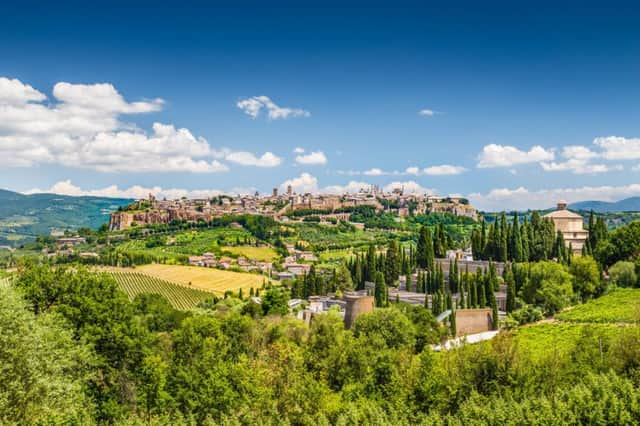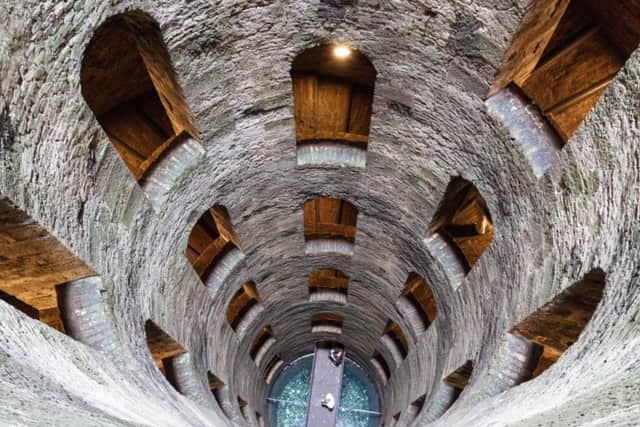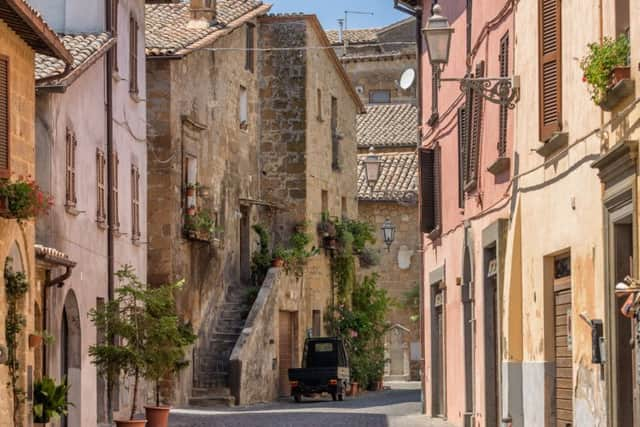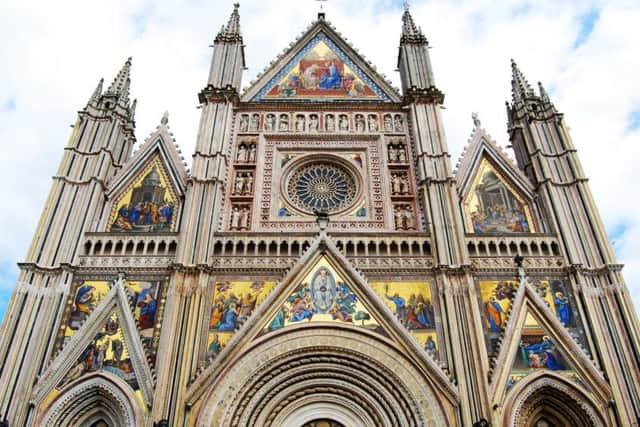Orvieto, Italy, Scotland on Sunday travel


The joys of Orvieto begin on the approach road. The town is situated on a high plateau, which made it a perfect settlement for all peoples from the Etruscans onwards threatened by marauding invaders. The great cathedral at the highest point in the town can be seen from a distance on the autostrada, the triangular mosaic at the peak of its facade rising teasingly to prominence and then seemingly receding and even disappearing as the traveller approaches. From many kilometres away, it shines in all its magnificence, perhaps the most beautiful cathedral in Italy, although Pisa and Milan would dispute that.
Orvieto is in Umbria, at the core of a region which defines itself as “Italy’s green heart”. It is a relatively small town, with a population of some 20,000, so not a place for those who require bustle, noise and nightclubs, but a haven for those who find pleasure in a quiet environment embellished by a rich history. Driving restrictions in the town mean that those who arrive by car would be well advised to leave their vehicle at the lower level alongside the station, and those who come by train have no choice, for the medieval town is perched at the top of sheer cliffs high above them. Access is by a modern funicular system. When I first went there many years ago the system was more complex, charming and precarious, relying on a balance between descending and ascending cars, the equilibrium maintained somehow by an artificial lake of water. I never understood it then, and only the elderly have a memory of it now.
Advertisement
Hide AdAdvertisement
Hide AdOne alights on to a well maintained piazza, and for those who have no desire to go straight to their hotel, a couple of hundred yards behind the disembarkation point stands the first of Orvieto’s curiosities, the Well of St Patrick. Access to water was always a problem, not only when the town was under siege, as it frequently was. The question became more acute when successive Popes were drawn by Orvieto’s cool climate and general attractiveness to make it their summer residence in seasons when Rome was judged uninhabitable.


The dignity of a Pope can be judged by the size of his retinue, so the town had to cope with the annual invasion of cardinals, bishops and lackeys of the papal court, meaning that the demands made of the water supply were increased. In the mid-16th century, a very deep well was bored into the ground. It was given its name from a similar structure in Ireland where it was said that the shaft went down as far as Purgatory.
The Orvieto well stops somewhere short of that, but not far short. The cavity is wide and deep, and the structure has the internal appearance of a multi-windowed lighthouse turned upside down. It is an astonishing feat of engineering. There are two separate staircases, one descending and the other ascending, but beware. It is forbidden to go in for a quick peep and turn back after a few steps. There is no communication between the two stairwells, and after sauntering 248 steps down, the visitor faces the arduous climb back up.
Under the town itself there are layers of fascinating caves which have been in use for various purposes from Etruscan days until the Second World War, when they provided shelter from bombing and housed a hospital. In peaceful days, wealthy families used them as a dovecot, but the pigeons’ homing instincts turned against them, for the birds were used not for sport but for food. They flew home to be caught and cooked. Elsewhere in that environment, where the temperature is constant, there are the remains of centuries-old olive presses.
But it is time to come out into the light. There are several buildings around the town which still carry the name Papal Palace, the most attractive of which stands alongside the cathedral, and today houses the museum. The fact that the town was built on a rock plateau surrounded by cliffs means that Orvieto has been spared the brutalising sprawl which has defaced other Italian towns, and remains beautifully intact, like a painting in a frame. It was divided into four quarters each with its own character, and when they were not bothered by outside foes they used the spare energy to fight among themselves. Enlightened traffic regulations mean it is a joy to walk along streets lined by palaces, to turn into alleyways where traditional crafts are still practised and then to follow the winding roads which lead on to charming piazzas with medieval civil or church buildings.


And then there is the cathedral which displays the artistic crafts of the Middle Ages and the Renaissance at their highest. The glorious facade is divided into three sections, the lowest displaying the mastery of the stone-mason in its intricate carvings, the central skill of mosaic designers, and the upper part a magnificent rose window. The interior has been embellished by Renaissance masters, although some will find the works of Luca Signorelli on the Last Judgment too unforgiving.
And when all the sightseeing is done, the local white wine, with its fresh, clean flavour, is considered one of the best in Italy, so stop at Eno Teca Orvieto on the Corso Cavour for a glass of Orvieto Classico.
There is a wide range of restaurants, and the Trattoria Delli Poggi on the same street is a welcoming place with excellent local cuisine.
FACTFILE


Advertisement
Hide AdAdvertisement
Hide AdOrvieto is on the main railway line between Rome and Florence. Trains go from the main stations, the Stazione Termini in Rome and the Santa Maria Novella station in Florence. There is also a service from the station in Fiumicino airport which avoids the need to go into Rome and requires only one connection at Tiburtina.